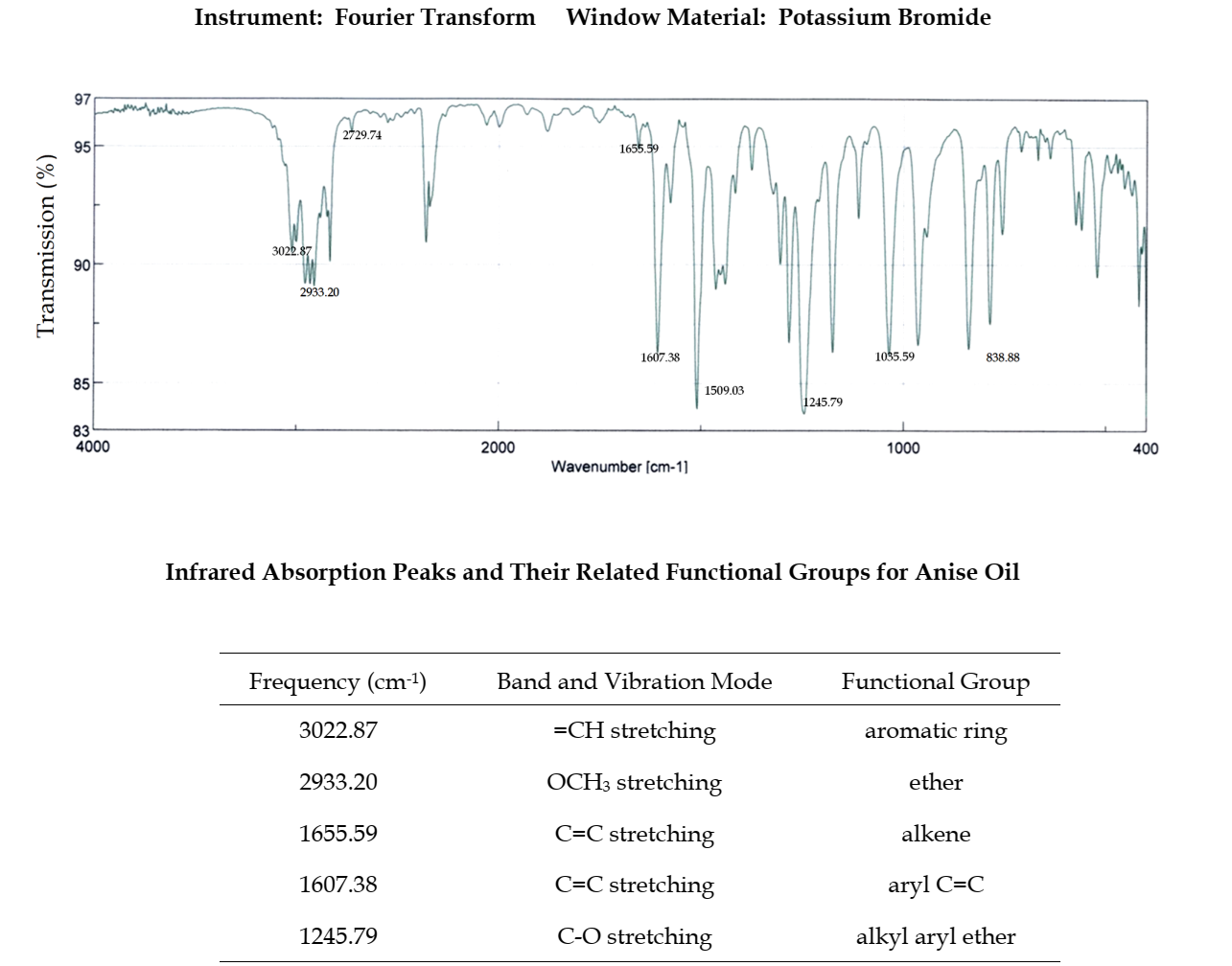ตำรายาของประเทศไทย
Thai Pharmacopoeia
สำนักยาและวัตถุเสพติด กรมวิทยาศาสตร์การแพทย์ กระทรวงสาธารณสุข
Bureau of Drug and Narcotic, Department of Medical Sciences, Ministry of Public HealthAniseed Oil
Category Carminative; pharmaceutic aid (flavouring agent).
Anise Oil is the volatile oil distilled with steam from anise, the dried ripe fruits of Pimpinella anisum L. (Family Apiaceae).
Constituents Anise oil contains trans-anethole as the predominant compound. It also contains g-himachalene, estragole and cis-anethole.
Description Colourless, or pale yellow, highly refractive liquid; odour, that of the crushed fruit; taste, sweet and aromatic. Crystallizes on cooling.
Identification
A. The infrared absorption spectrum corresponds to the spectrum obtained from anise oil as shown below.
B. Carry out the test as described in the “Thin-Layer Chromatography” (Appendix 3.1).
Standard solution Dissolve 10 µL of linalool, 30 µL of anisaldehyde and 200 µL of anethole in toluene and dilute to 15 mL with the same solvent. Dilute 1 mL of this solution to 5 mL with toluene.
Test solution Dissolve 1 g of the sample in toluene and dilute to 10 mL with the same solvent.
Adsorbent Silica gel F254
Mobile phase Ethyl acetate and toluene (7: 93) Application Apply 5 µL of each solution, as 10-mm bands.
Development and drying Develop the plate and dry in air.
Detection Examine the plate under ultraviolet light (254 nm). Spray the plate with methyl 4-acetylbenzoate TS, heat at 105° for 10 minutes and observe the result. Examine the still hot plate under visible light within 5 minutes.
Results When examined under ultraviolet light (254 nm), the test solution shows a quenching band due to anisaldehyde at the lower third and a very strong quenching band due to anethole at the upper third of chromatogram, corresponding in Rf to the bands shown by the standard solution.
When examined under visible light, the test solution shows a grey band due to linalool at the lower third; a yellow band due to anisaldehyde at the middle; a brown band due to anethole at the upper third of the chromatogram, corresponding in colour and Rf to the bands shown by the standard solution; a violet-brown band may be present just below the solvent front.
Packaging and storage Anise Oil shall be kept in well-filled, tightly closed containers, protected from light, and stored at a temperature not exceeding 25°. If the oil has crystallized, it should be melted and mixed before use.
Freezing temperature Not below 15° (Appendix 4.4).
Optical rotation −2° to +1° (Appendix 4.8).
Refractive index 1.553 to 1.560, at 20° (Appendix 4.7).
Specific gravity 0.978 to 0.988 (Appendix 4.9).
Limit of phenols A 1 in 3 solution of recently distilled Anise Oil in ethanol (90 per cent) is neutral to moistened litmus paper, and the mixture develops no blue or brownish colour upon the addition of 1 drop of iron(III) chloride TS to 5 mL of the solution.
